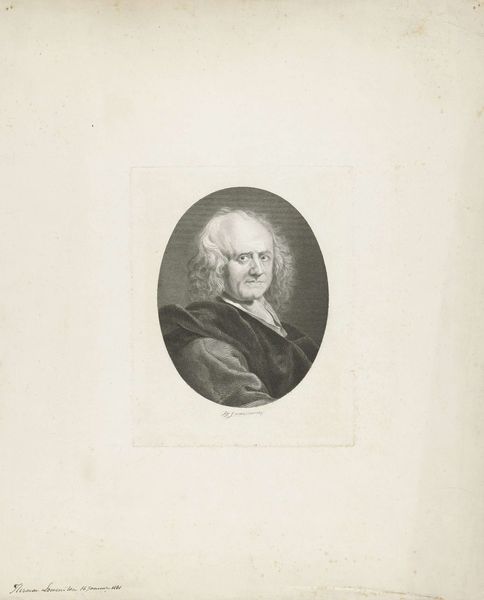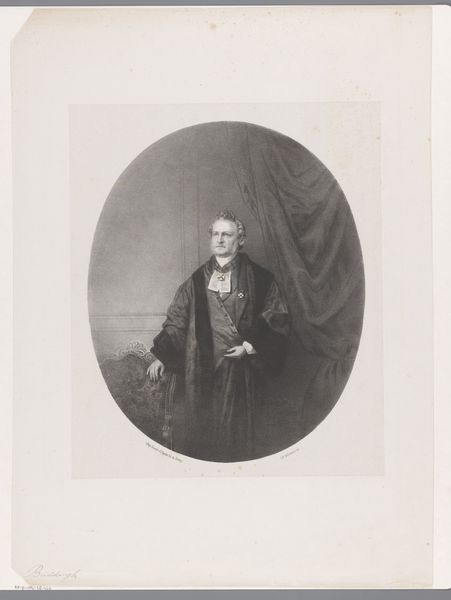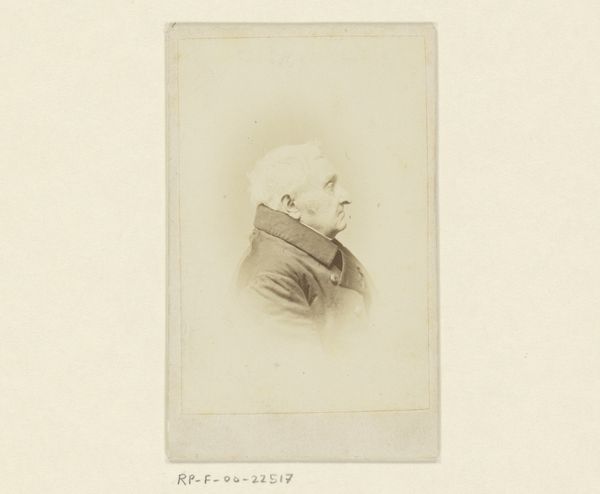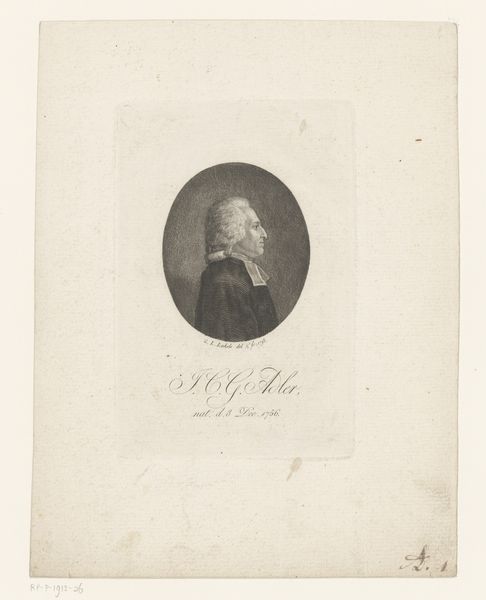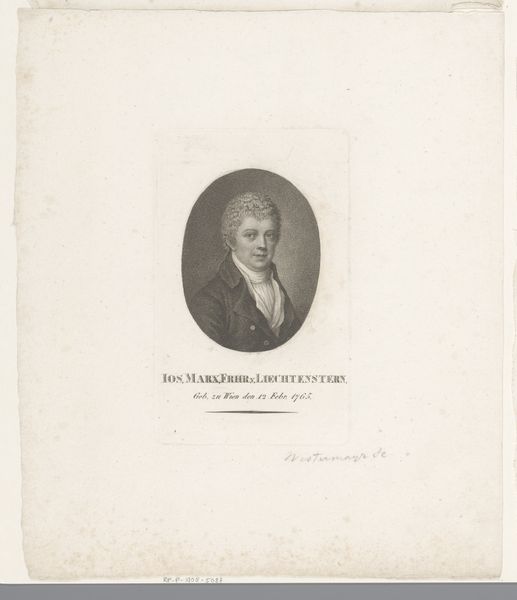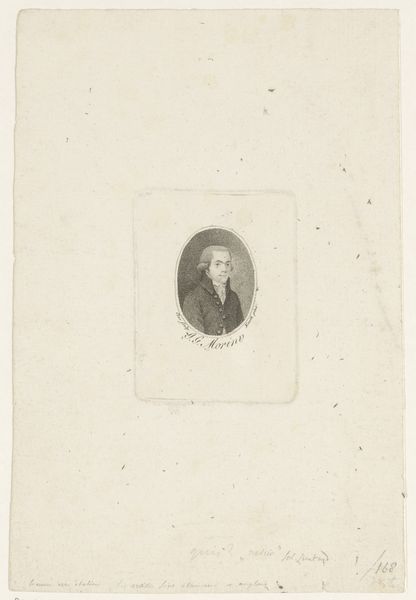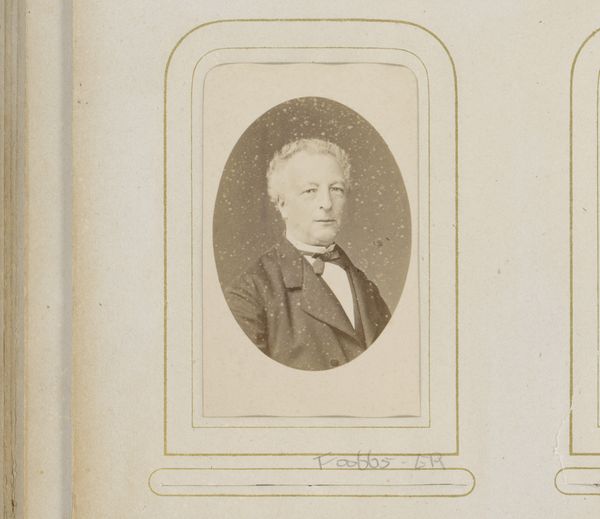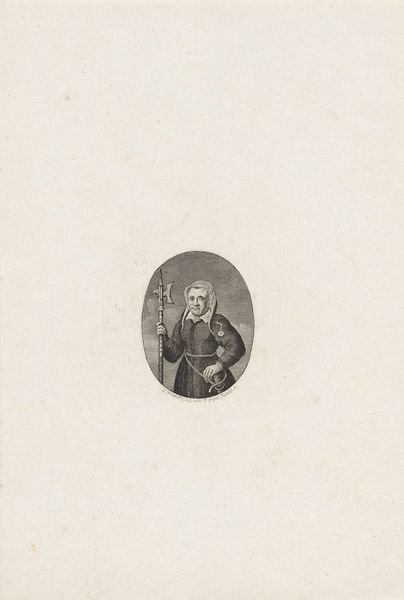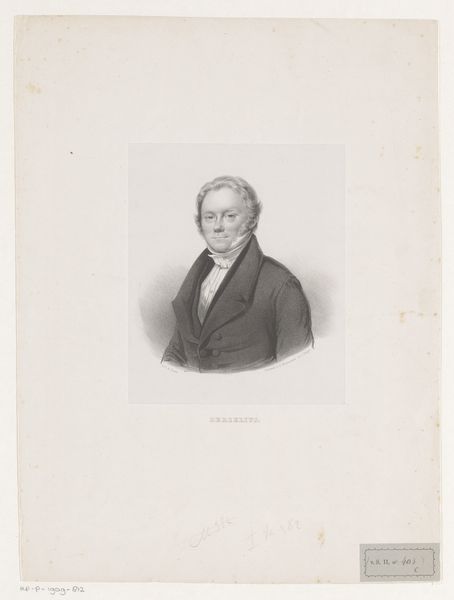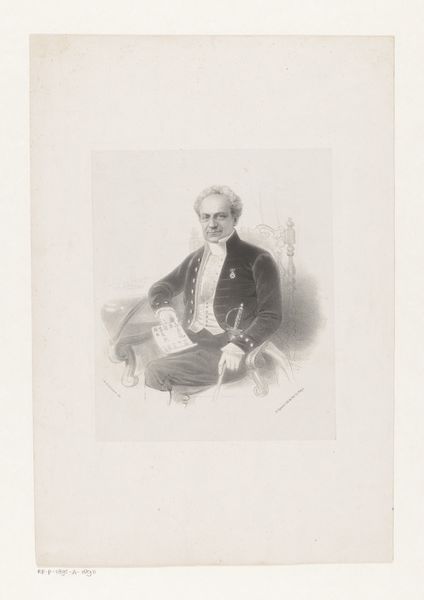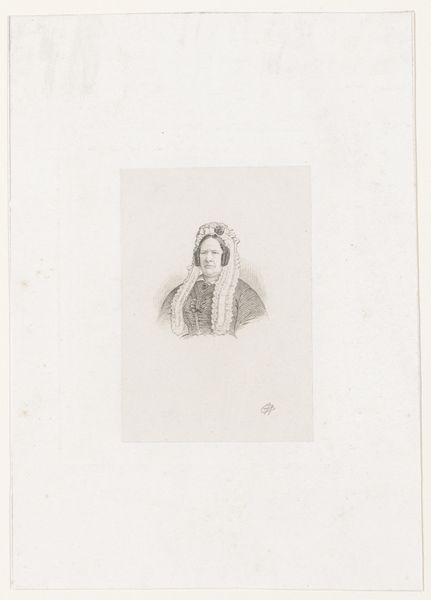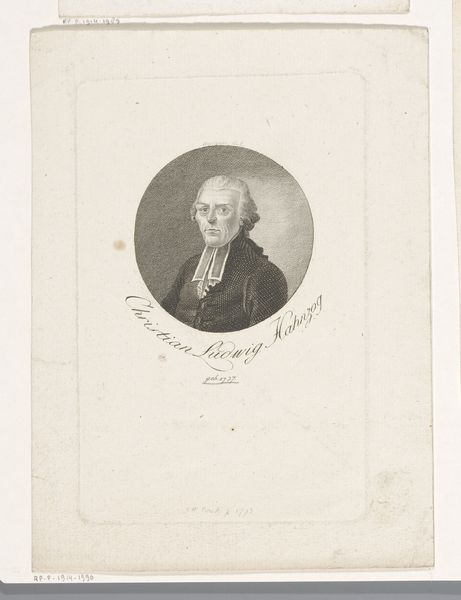
drawing, pencil
#
portrait
#
pencil drawn
#
drawing
#
pencil
#
realism
Dimensions: height 340 mm, width 246 mm
Copyright: Rijks Museum: Open Domain
Curator: This is a pencil drawing created in 1852 by Willem Frederik Wehmeyer. It's entitled "Portret van Abraham des Amorie van der Hoeven." Editor: The immediate impression is one of starkness. The subject, encased in that dark oval, seems both imposing and slightly vulnerable. The grey scale enforces a sense of seriousness and distance. Curator: Let’s consider Wehmeyer's choice of medium. Pencil drawings were incredibly accessible in the mid-19th century, making portraiture achievable for a wider segment of the middle class, both as artists and subjects. Editor: Precisely. The almost photographic realism is intriguing given that photography was emerging. It feels almost a conscious aesthetic choice. The line work is delicate, creating depth, texture. Note how the lines on the suit imply a stiff fabric and construct depth? Curator: The sitter, Abraham des Amorie van der Hoeven, was a prominent theologian. Consider how the relatively accessible nature of drawing democratizes portraiture. It brings images of people like van der Hoeven, and by extension their ideas, to a broader public. The multiplication of images matters! Editor: Yet, the overall composition retains classical portrait conventions. Look at the pyramidal form of the figure, its containment within the oval. The symmetry of his expression, only broken slightly by that one spot in the lower right. It roots itself in established notions of dignified representation, despite the ‘common’ medium. Curator: Agreed. While it employs a relatively ‘common’ material, this image serves to reproduce and disseminate the image of someone like van der Hoeven to a broader public and also communicate values associated with status in this period. This speaks to its broader cultural impact and that reproduction. Editor: So, we have both access and formality, technique and status presented through a restricted range. Interesting constraints. The pencil, seemingly simple, becomes a powerful mediator in portraying status and likeness. Curator: Indeed, thinking about this work has shown how closely material choices can become wrapped up in constructing and distributing power in society. Editor: And how effective, despite the limited resources. I find myself impressed by the possibilities held within such limitations.
Comments
No comments
Be the first to comment and join the conversation on the ultimate creative platform.
